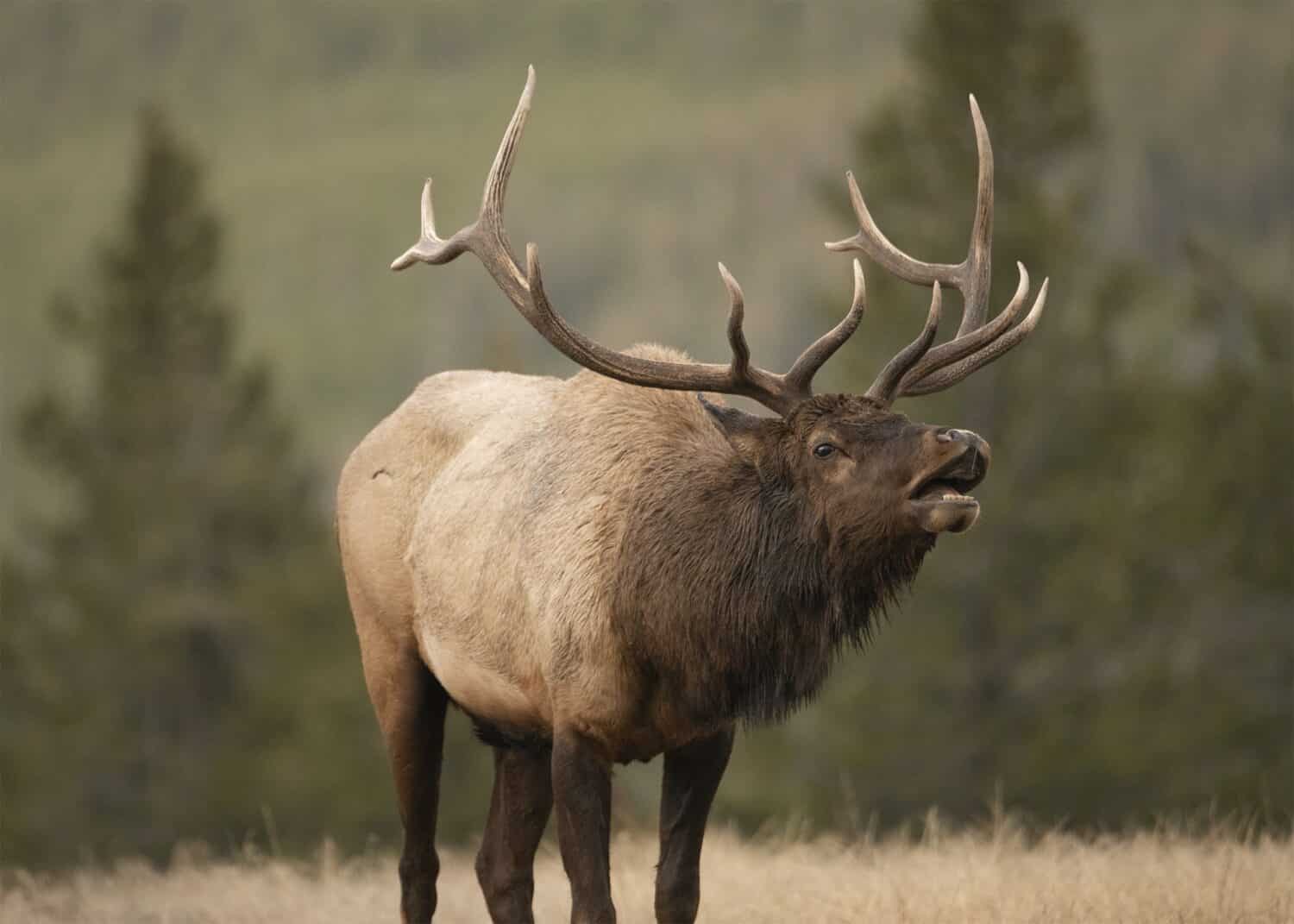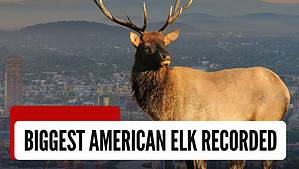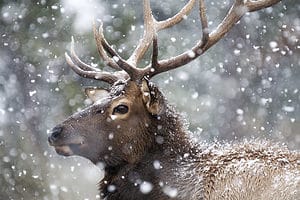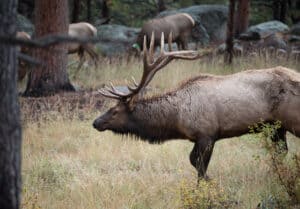One of the most majestic, calm, and beautiful creatures is the elk. Elk tend to avoid approaching people because they prefer minding their own business. While they come across as very relaxed, they’re some of the most massive beasts in the entire world. The average elk weighs in at 700 pounds, making them the heaviest that comes from the deer root bloodline. One of the most defining features of an elk undoubtedly happens to be their antlers. Antlers on an elk signify many different things, including age and the fact that it’s a male. Interestingly, females don’t have them. The lack of antlers also tells you roughly what time of year it is and what season elks were previously in.
Why Do Elk Shed Antlers and When Do They Do It?
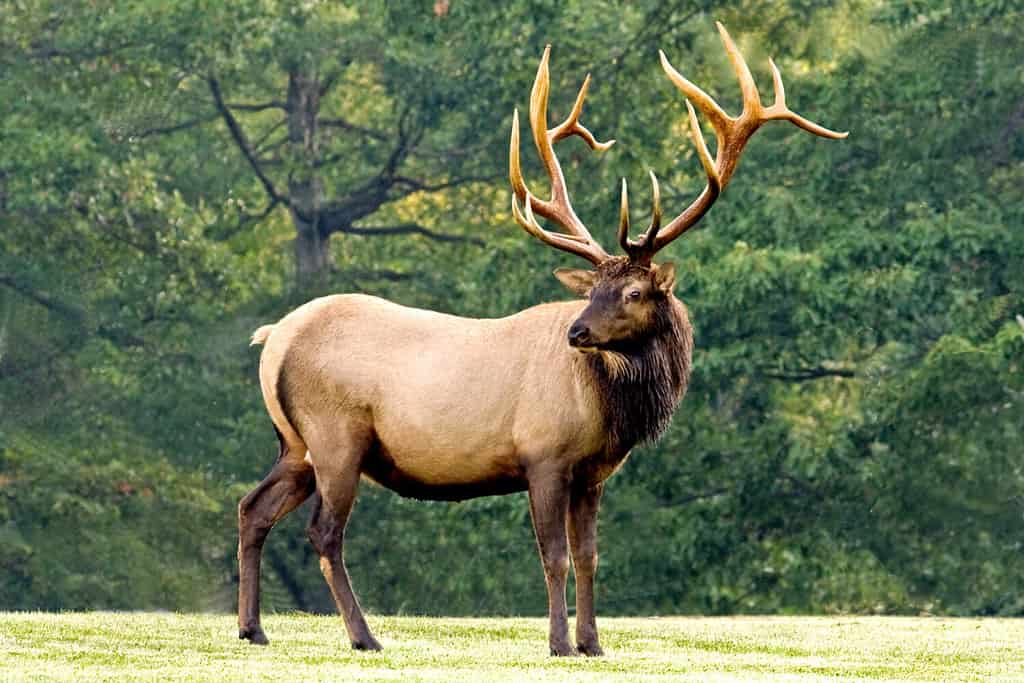
An elk with beautiful antlers that’ll be shed soon.
©Paul Staniszewski/Shutterstock.com
Antlers are an elk’s most beautiful feature. However, elk shed their antlers after breeding season due to a decrease in testosterone. According to Bay Nature, once these levels drop, the bone and tissue near where the antlers attach become weaker. This is due to the testosterone spreading to places it deems more necessary.
After less testosterone goes to this base, the antlers naturally fall off. While it might seem this would take a long time, it doesn’t. It can take as little as 24 hours for the antlers to completely fall off. Mating season usually lasts until late March. Once the antlers fall off, they start to regrow about two weeks later for the following year.
Can Elk Antlers Grow Back If They’re Cut Off and Not Shed?
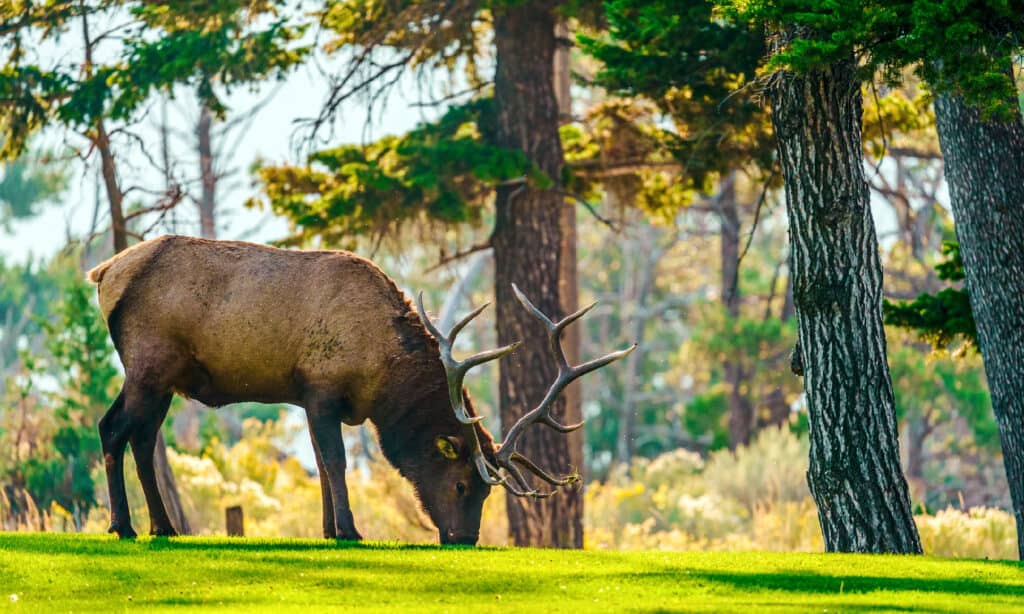
An elk with bigger antlers than usual.
©iStock.com/FluidMediaFactory
Since elk antlers are so beautiful, they have unfortunately become a highly sought-after thing. And since they’re so highly sought-after, many people will do whatever is necessary to get them. This can lead to people cutting off the antlers of an elk. You should never cut the antlers off of an elk because of the irreparable damage it would cause. Since this isn’t something that happens naturally, the antlers on an elk probably won’t grow back after getting forcibly removed.
There’s always the chance that they will, but since it isn’t in the process that Mother Nature intended, it should not be done. Even after the antlers are shed, you should still leave the leftover antlers in the forest to continue the cycle. These antlers are vital to many different species that live in the mountains alongside the elk. These species include mice, squirrels, and porcupines. These animals will eat the antlers for the nutrients they provide. Chewing on the antlers also helps shave their teeth, which are always growing.
Does It Hurt Elk to Shed Antlers And Why Do They Even Have Them?
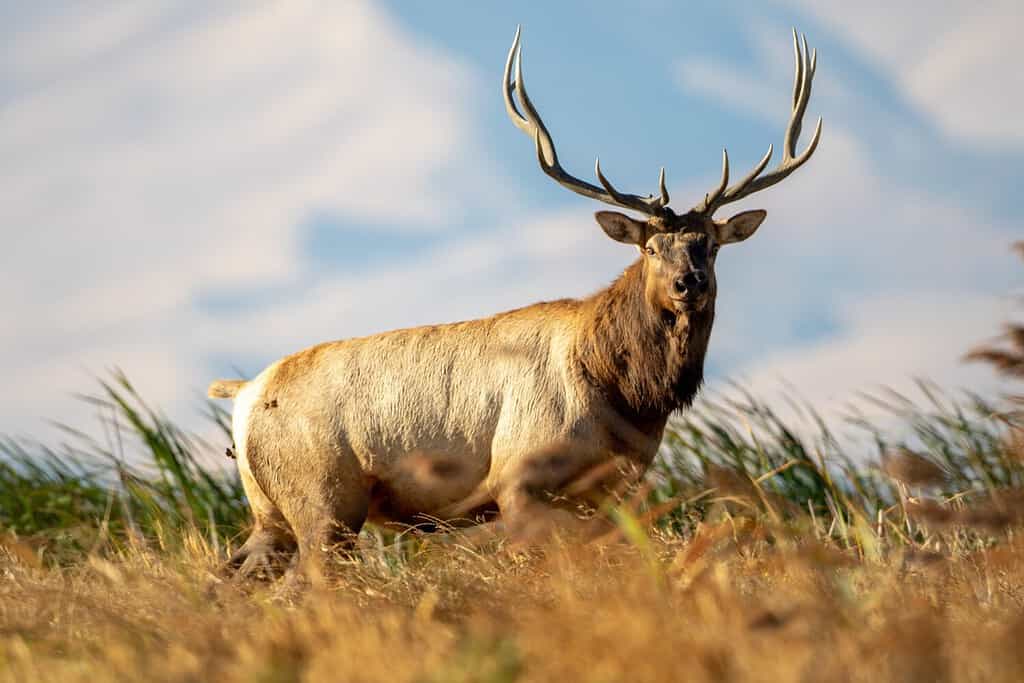
Elk looking on with beautiful antlers.
©RelentlessImages/Shutterstock.com
Antlers are technically bones that come through the skin of an elk. It’s natural to think that losing part of your bone would be incredibly painful. Thankfully for elk everywhere, it’s not a painful thing to shed antlers. It might even feel good to release the antlers after they don’t get the necessary testosterone. The antlers are vital for elk because they help the males attract female mates. Much like the human species, elk have different characteristics that can help them in the pool of mating.
What State Has the Most Elk?
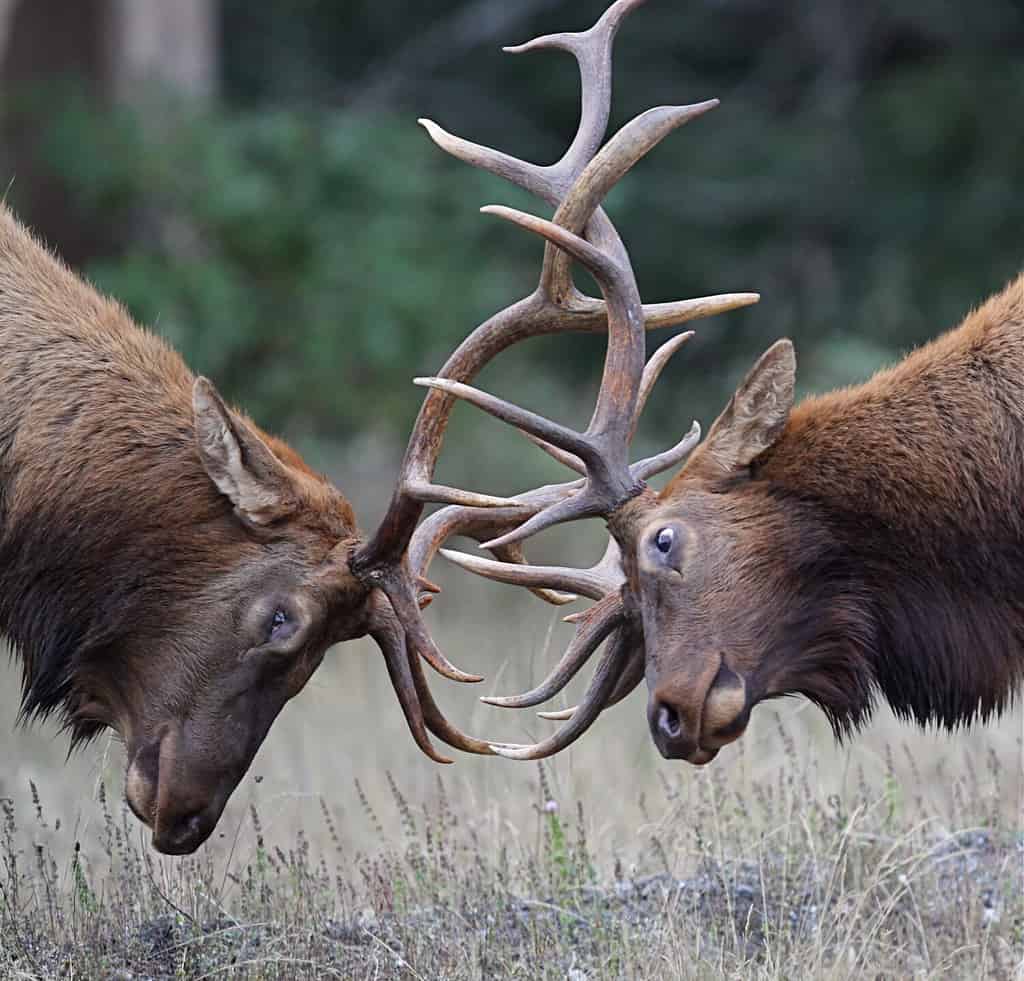
Two elk using antlers to fight each other.
©Tom Reichner/Shutterstock.com
Elk are known for living in mountain ranges that are wide open and a little bit on the colder side. Colorado has this perfect climate for elk, and elk have known this. Elk have migrated to Colorado in droves, making Colorado the most popular state for elk to reside in. There are almost 290,000 living there. Colorado has a lot of open land when you’re outside the bustling city of Denver. The mountains are full of different natural food options for elk to eat. They also feel safer from being hunted by other animals. There is constant water flowing, whether it be from the snow or rain that falls.
Elk truly are some of the most majestic creatures on this planet. Their antlers are important to decoding what time of year it is for the elk. If you ever see elk antlers on the ground, make sure to leave them be to let the ecosystem continue to run its course. Keeping elk safe is something crucial to the survival of the wild, as they are key for both the success of mountain life while also being breathtaking to admire.
Thank you for reading! Have some feedback for us? Contact the AZ Animals editorial team.

